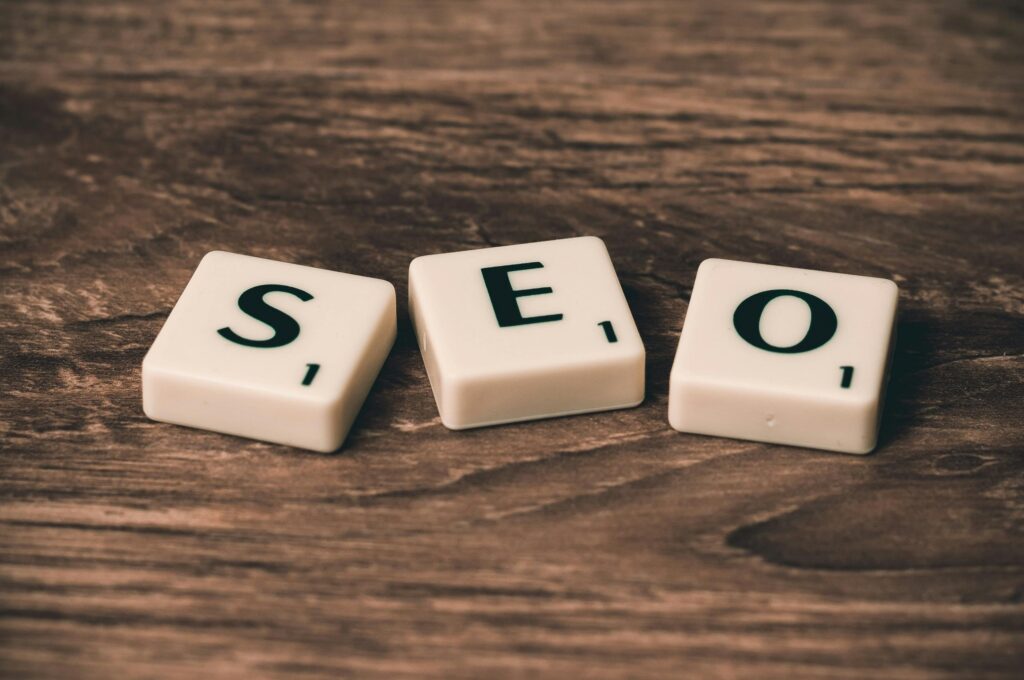For businesses to display their ads on the search results page, Google offers an advertising opportunity through Google Ads. This allows maximizing the visibility of the brand to the masses. But do you know what’s that basic thing you need to do for a successful Google Ads campaign? Well, that is to optimize your ad as per the correct display size. We understand that memorizing the Google banner ad sizes would be the last thing you want to do. This is why we’re here to help you with our guide. From the list of commonly used Google ad display sizes to important tips on how to create a Google banner ad, we’re going to cover everything for you. So, let’s get started!
Most Commonly Used Google Ad Banner Sizes
Let’s break down some of the most commonly used sizes for Google banner ads you’ll come across. These sizes are tried and tested, and they tend to perform well across various platforms:
200 x 200 – Small square
300 x 250 – Inline rectangle
728 x 90 – Leaderboard
970 x 90 – Large leaderboard
468 x 60 – Banner
336 x 280 – Large rectangle
160 x 600 – Wide skyscraper
120 x 600 – Skyscraper
250 x 250 – Square
300 x 600 – Half-Page ad
For mobile:
300 x 50 – Mobile banner
320 x 50 – Mobile banner
320 x 100 – Large mobile banner
Standard Image Sizes for Google Banner Ad
Google Ads campaign supports a wide variety of image ad sizes across its display network. Here’s the complete list of standard banner dimensions:
| Dimensions (px) | Common Name |
| 300 x 250 | Medium Rectangle |
| 336 x 280 | Large Rectangle |
| 728 x 90 | Leaderboard |
| 970 x 90 | Large Leaderboard |
| 468 x 60 | Banner |
| 250 x 250 | Square |
| 200 x 200 | Small Square |
| 120 x 600 | Skyscraper |
| 160 x 600 | Wide Skyscraper |
| 300 x 600 | Half Page |
| 240 x 400 | Vertical Rectangle |
| 300 x 1050 | Portrait |
| 320 x 50 | Mobile Banner |
| 320 x 100 | Large Mobile Banner |
| 300 x 50 | Small Mobile Banner |
| 980 x 120 | Panorama |
| 930 x 180 | Top Banner |
| 580 x 400 | Netboard |
| 425 x 600 | Custom Portrait |
| 970 x 250 | Billboard |
| 480 x 320 | Landscape Mobile |
| 320 x 480 | Portrait Mobile |
| 768 x 1024 | Tablet Portrait |
| 1024 x 768 | Tablet Landscape |
| 375 x 50 | Mobile Leaderboard |
| 414 x 736 | iPhone Plus Size |
| 736 x 414 | Landscape Phone |
| 1024 x 90 | Wide Leaderboard |
| 480 x 32 | Slim Banner |
| Additional sizes include: 88 x 31, 292 x 30, 220 x 90, 300 x 31, 300 x 57, 600 x 314, and many more. |
Responsive Display Google Banner Ad Sizes
Responsive ads automatically adjust in size and appearance to fit various ad placements. These require minimum dimensions:
- Landscape Image: 600 x 314 (Aspect ratio 91:1)
- Square Image: 300 x 300 (Aspect ratio 1:1)
- Square Logo: 128 x 128 (1:1)
- Landscape Logo: 512 x 128 (4:1)
App Ad Sizes
Google offers several size options for ads appearing within mobile apps.
Image App Install Ads
These are standard display ads shown inside apps:
- 300 x 250, 336 x 280, 728 x 90, 468 x 60
- 320 x 50, 320 x 100, 300 x 50
- 120 x 600, 160 x 600, 300 x 600
- 970 x 90, 980 x 120, 930 x 180
- 240 x 400, 425 x 600, 300 x 1050
- 480 x 320, 320 x 480, 768 x 1024
- 1024 x 768, 1024 x 90, 480 x 32
- 375 x 50, 414 x 736, 736 x 414
- 250 x 250, 250 x 360, 580 x 400
App Ads for Installs
These are used in App campaigns:
- 600 x 314 (Minimum for 91:1 aspect ratio)
- All major banner sizes: 300 x 250, 728 x 90, 320 x 50, 320 x 100, etc.
App Ads for Engagement
Used in re-engagement campaigns:
- 300 x 250
- 320 x 50
- 320 x 480
- 480 x 320
- 1200 x 628
Video Ad Banner Sizes
Video Overlay Ads (Banner)
Used for non-skippable video formats:
- 300 x 60
Outstream Ads (Logo Placement)
- Must be a 1:1 aspect ratio between 1 x 1 and 1024 x 1024
Choosing the Right Size for Google banner Ad
Now that we’ve covered the basics, let’s talk about how to choose the right Google banner ad size for your specific campaign. Here are a few tips to help you decide:
- Know Your Goals: What are you hoping to achieve with your ads campaign? If you’re looking to drive clicks, a medium rectangle (300×250) might be your best Google Ads design. If brand awareness is your goal, a leaderboard (728×90) could be more effective due to its prominent placement.
- Consider Your Audience: Think about where your audience spends their time. If they’re primarily on mobile, opt for a mobile leaderboard (320×50). If they’re desktop users, a wide skyscraper (160×600) might be more effective.
- Placement Matters: The placement of your Google banner ad on a webpage can significantly impact its performance. Leaderboards and medium rectangles often perform well because they are highly visible. Experiment with different placements to see what works best for your audience.
- Design for Engagement: Larger ads like the half-page (300×600) provide more space for creativity. Use this space wisely to create an engaging, visually appealing Google Ads design that draws users in.
Formats Supported by Google Ads
There are mainly 3 types of formats you can upload on Google banner ads: JPG, PNG, and GIF. It depends on which ad you think would be more appropriate to increase your reach and viewable impressions.
How to Make Ads?
So, you’ve scrolled through the mountain of Google ad sizes, figured out which ones work best, and now you’re itching to start with Google Ads design, right? You’re in the right place. Let’s break it down step by step and turn your ideas into a Google banner ad that catches eyes and wins clicks.
Learning how to make ads can sound technical, but it’s not. Once you know what size to go for, it’s all about getting creative, and keeping a few golden rules in mind.
Step 1: Know Your Ad Sizes Like the Back of Your Hand
Before you jump into designing a Google banner ad, you need to know which size you’re working with. Google offers a ton of options, but some ad sizes perform better than others. The most popular ones to keep in your back pocket are:
- 300 x 250 – Medium Rectangle
- 728 x 90 – Leaderboard
- 160 x 600 – Wide Skyscraper
- 320 x 50 – Mobile Banner
These are the usual suspects that work well across websites and devices. If you’re making responsive display ads, you won’t need to pick a single size, Google does the adjusting for you. But if you want pixel-perfect control, stick with the standard sizes.
Step 2: Use the Right Tools for Google Ads design
Now comes the fun part where you start with the Google Ads design. And no, you don’t need to be a Photoshop pro. There are some easy-to-use tools out there that make ad design feel like a walk in the park.
1. Canva
If you love drag-and-drop simplicity, Canva is your go-to. It’s loaded with templates, and you can even type in your custom pixel size before starting. Whether you’re designing a 300 x 250 or a 970 x 250 billboard-style Google banner ad, Canva’s got your back.
2. Bannersnack (Now called Creatopy)
This one’s tailor-made for banners and display ads. It lets you create multiple sizes at once. It’s super handy if you’re doing a full campaign rollout. Plus, it’s packed with animated features to make your Google banner ads pop.
3. Vista Create
Think of Vista Create as Canva’s cousin. It’s clean, quick, and packed with design goodies. You just plug in the size you want and start creating. Whether you’re working on a static Google banner ad or something a little fancier, Vista Create makes it a breeze.
Step 3: Keep These Design Tips Up Your Sleeve
Now that you’re in the driver’s seat, here are a few must-know tips to steer your ad design in the right direction:
Be Consistent with Your Branding
Ever seen an ad and instantly knew which brand it was (without even reading the text)? That’s the power of consistent branding. Use the same fonts, colors, and logos across all your Google Ads design so your brand sticks in people’s minds.
Don’t Skip the CTA (Call-to-Action)
What’s the point of an ad if no one clicks it? A strong, clear CTA like “Shop Now,” “Learn More,” or “Get the Deal” gives your audience direction. Without it, your ad is like a map without a destination.
A/B Testing is Your Secret Weapon
One design might get 10 clicks, and another might get 200. All because of a small tweak. Use Google Ads A/B testing to see what works. Try changing colors, headlines, or even just the button text of your Google banner ad. Keep testing, keep learning.
Stay Simple, Stay Smart
When it comes to Google ads, less is more. Instead of throwing everything but the kitchen sink into your design, stick with one strong image, a short message, and a clear CTA. Clutter confuses. Simplicity sells.
Step 4: Upload to Google Ads and Set Your Campaign Live
Once your ad designs are ready, head over to your Google Ads account, go to the Display Campaign section, and start uploading your creatives. Make sure to test them across devices and preview how they’ll appear. Choose your targeting, set your budget, and hit go!
And there you have it—you just made your first Google banner ad!
Final Thoughts
Google banner ad sizes are a crucial part of Google Ads. It is one of the deciding factors . By understanding your goals, knowing your audience, and continuously testing and optimizing, you can create effective banner ads that drive results. Remember, it’s not just about filling space – it’s about making an impact. So, go ahead and experiment with different sizes, find what works best for you, and watch your Google Ads campaign thrive. Need help? Rely on Wildnet to run successful ads for you that bring results. So, why wait? Get in touch with us today.
Frequently Asked Questions
1. What is the best size for Google banner ad?
Ans. The best-performing Google display ad sizes are usually 300×250 (Medium Rectangle), 728×90 (Leaderboard), and 160×600 (Wide Skyscraper). These formats are widely supported across websites and mobile apps, giving your ad more visibility. While Google supports many ad sizes, sticking to these common ones increases your chances of getting better impressions and clicks.
2. Do I need to be a designer to make Google display ads?
Ans. Not at all! Today, you can use beginner-friendly tools like Canva, Vista Create, or Bannersnack to create professional-looking ads. These tools offer ready-made templates and let you customize designs by choosing your own fonts, images, and brand colors—no design degree required! Just bring your creativity and you’re good to go.
3. Why is a call-to-action (CTA) important in a display ad?
Ans. A call-to-action (CTA) tells your audience what to do next—like “Buy Now” or “Learn More.” Without a CTA, people might look at your ad but won’t take any action. A clear CTA boosts engagement and helps convert viewers into actual customers. It’s one small element that can make a big difference.
4. How can I test if my ad design is working well?
Ans. You can use A/B testing within Google Ads to compare two different versions of your Google banner ad. This helps you see which one gets more clicks or conversions. Sometimes a small change—like a different headline or background color—can drastically improve results. Testing helps you spend your ad budget wisely and get better ROI.
5. What’s the biggest mistake to avoid when in Google Ads design?
Ans. One common mistake is overcrowding the Google banner ad with too much text, too many images, or unclear messaging. If the ad feels messy, people won’t know what to focus on—and will scroll right past it. Keeping your ad simple, clean, and focused helps grab attention and communicate your message clearly and quickly.







